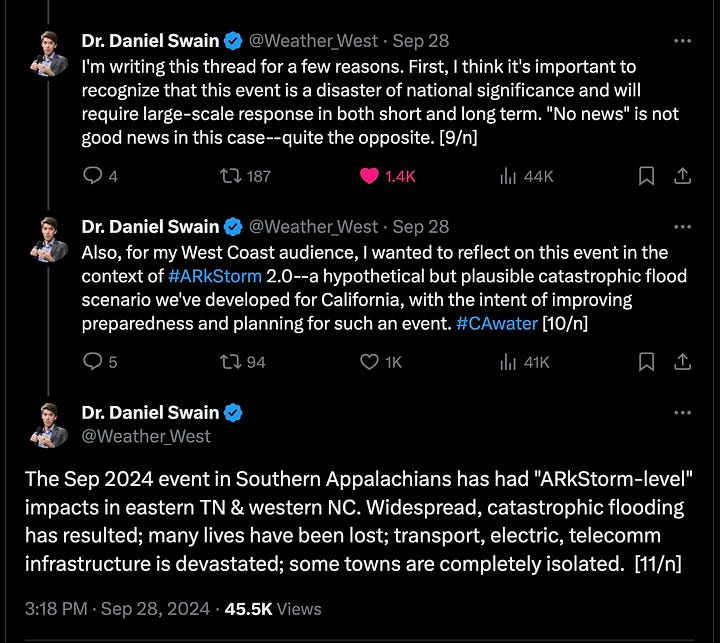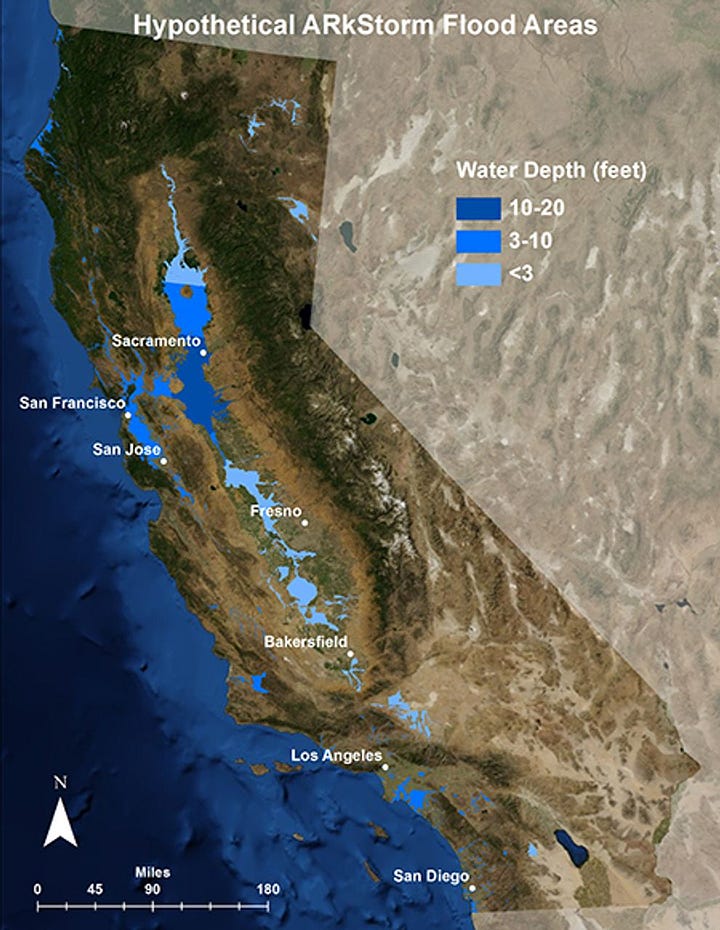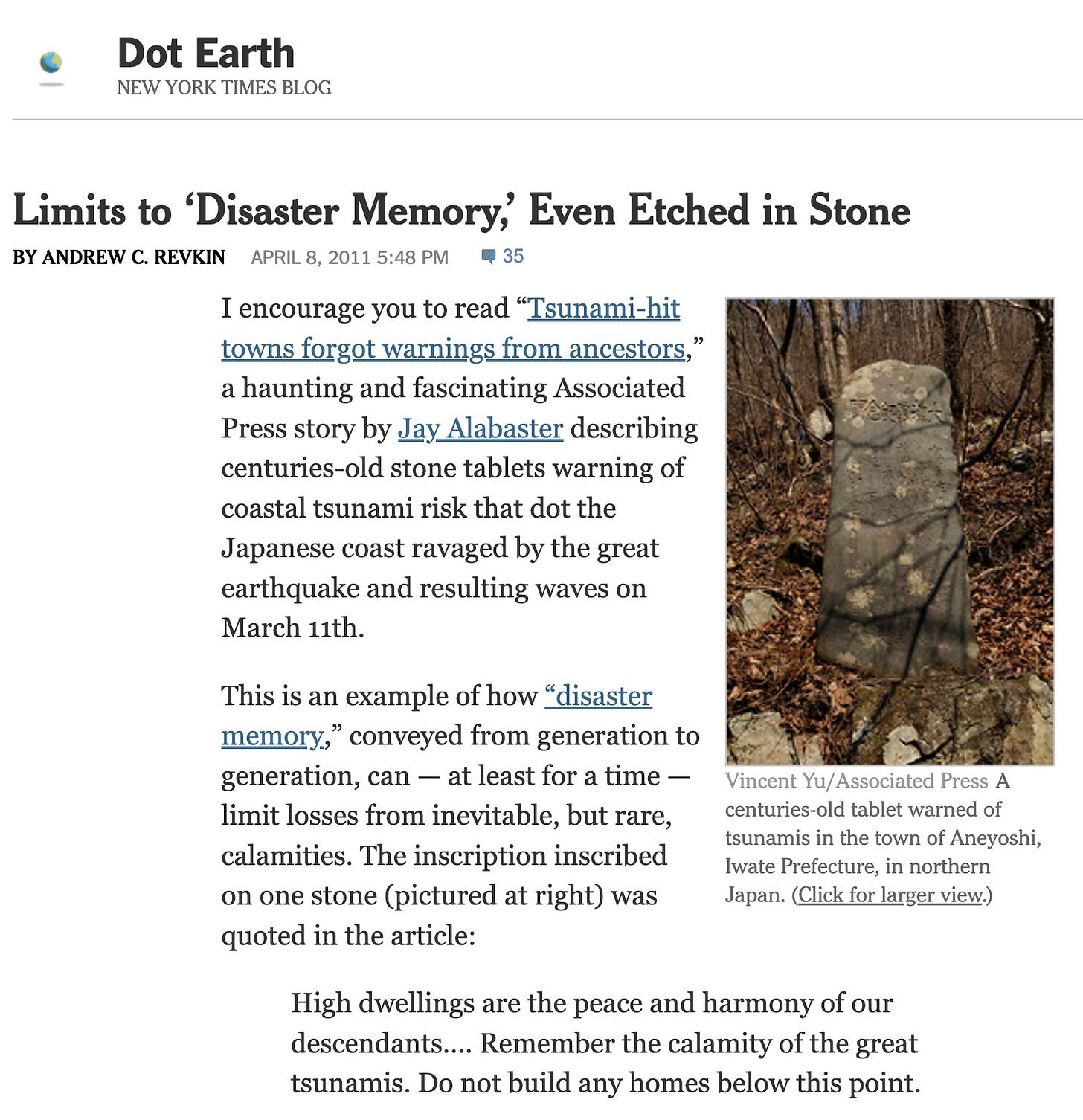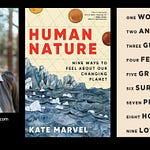First, here’s my freshly updated post offering a heap of ways anyone anywhere can help the organizations and volunteers working nonstop around Hurricane Helene devastation zones:
How to Help the Communities Devastated by Hurricane Helene's Catastrophic Deluges
UPDATE 10/4: I encourage you to share this Google Doc with a fantastic array of disaster aid groups at every level in Western North Carolina, which has by far the highest death count from the Hurricane Helene inland flood disaster:
Second, here’s a shoutout to the professional and volunteer first responders doing highly dangerous work seeking and rescuing survivors. Several are among the more than 215 victims so far. The North Carolina National Guard has been working nonstop.
Finally, please watch or listen to my Sustain What conversation seeking lessons from the catastrophic inland flooding triggered when Hurricane Helene's remnants collided with the Appalachian Mountains. My guest is David McConville, a data visualizer and risk communicator (his company is Spherical Studio) who grew up in the regions hammered by Helene and lived and worked in Asheville for many years trying to use technology, including a visualization dome, to convey the flood threat in the steep hills and deep hollows there. I got to know McConville after meeting him in Asheville when I spoke at wonderful Warren Wilson College there. We bumped into each other off and on in our separte, but related, journeys trying to figure out how to use media to foster sustainable human journeys.
As the catastrophic scope of the historic flooding in the region emerged last weekend, McConville said this on Facebook:
My heart is breaking today for many close friends in Asheville and western North Carolina, where I lived for over 20 years.
I’m also feeling an eerie sense of déjà vu. The catastrophic flooding of Hurricane Frances in 2004 got me interested in visualizing the dynamics of watersheds, impervious surfaces, and property development within bioregions.
I created the visualization below 15 years ago with The Elumenati and collaborators to help policymakers better grasp these dynamics and their consequences. Eerily, it features simulations of flooding in Biltmore Village, the real-world versions of which are currently all over the news.
He continued:
“Spherical is continuing this work in Los Angeles with Andy Lipkis, whose work on urban resilience was similarly catalyzed by his experience with flash floods in LA. As Daniel Swain notes, the looming threat of California's next ARKStorm bears striking parallels to what southern Appalachia is currently facing:
If you’ve been following me for awhile you already know about the history and future of extreme atmospheric rivers, with a repeat of the 1861-2 event that created an inland sea inevitable, if its timing remains uncertain. But here’s an excerpt from, and link to, climate and weather scientist Swain’s great thread and here’s a post of his from 2022 on this threat, amplified by human-caused global warming.


The wider picture of disaster amnesia
In the webcast McConville and I talk about the challenges in trying to get communities like Asheville to act on data showing profound, but rare, hazards. It’s not easy.
In our chat he notes such warnings can end up just as ignored as Japan’s ancient, moss-encrusted “tsunami stones” were as generations forgot the warnings of ancestors who carved phrases like this into large tablets set on hillsides above the reach of great rare waves:
High dwellings are the peace and harmony of our descendants…. Remember the calamity of the great tsunamis. Do not build any homes below this point.
This is something I wrote about back in 2011:
I did a highly relevant Sustain What conversation some months back with Daniel Starosta, who studies the art, music, and history produced in the wake of disasters to better understand the social dynamics that can either impede or boost preparedness facing future threats.
Starosta’s research has spanned the landscape of disaster from hurricanes in Florida to tsunamis in Japan. He also works in climate adaptation and disaster resilience planning, with experience from Puerto Rico to Hawai'i to Bhutan. Here’s that conversation:
















Share this post